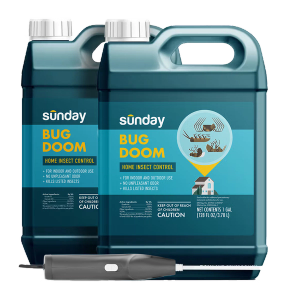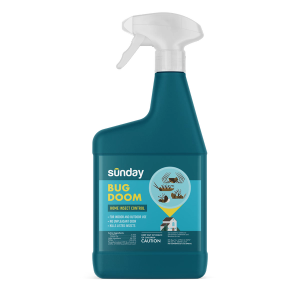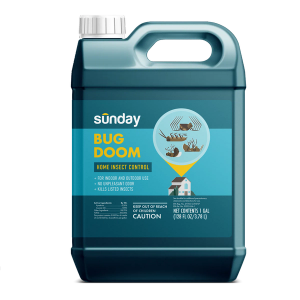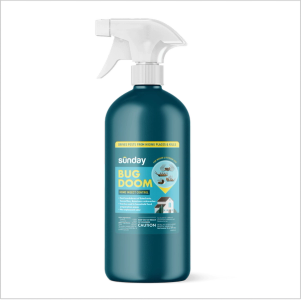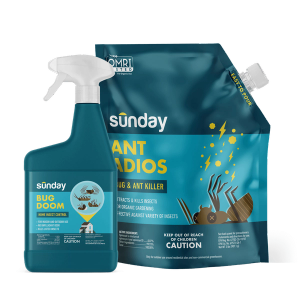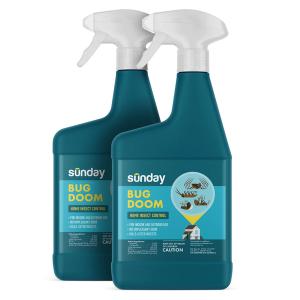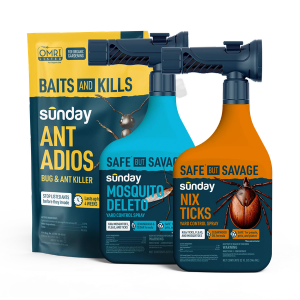Known as Chinch Lawn Injury, the effects of chinch bug infestation on your lawn can range from wilted grass or discoloration to large yellow or brown patches and pieces of lawn becoming unrooted from the ground.
Get to know chinch bugs
Chinch bugs are surface-feeding insects. Very small and fast-moving, they tend to blend in with grass and scurry away when disturbed. Since they're hard to spot, the first signs of a chinch bug issue can be lawn damage. There are actually 27 different species of Chinch bugs(!), but of those species there are four common types in the United States.
- Common chinch bug
- Hairy chinch bug
- Southern chinch bug
- Western chinch bug
Chinch bugs are active all growing season, from the spring through the fall. Prevalent across both the northern and southern climates, they're most common during the warmer, dry season. While they're most often reported as pests on St. Augustinegrass, they can also infest centipede grass, zoysia grass, bahia grass, torpedo grass, pangola grass, and bermudagrass.
The problem with chinch bugs
The main issue with chinch bugs is that they eat grass. When they feed on turfgrass, they emit a salivary secretion into the plant which then complicates the movement of water and nutrients throughout the plant. This is the reason that the grass wilts and becomes discolored.
How to spot a chinch
The best way to spot a chinch bug is by the damage they cause. Grass will wilt, be discolored, and eventually die regardless of irrigation. The bugs eat the base of plants causing them to be easily pulled up from the ground. An easy test is to grab a plant in a potentially affected area—if it comes right up without any tension you probably have chinch bugs.
For reference, you can compare the affected plants to an area that you know is healthy. If the affected area is a lot weaker, it’ll be easy to tell. Another distinct sign of chinch infestation is frass, which is a nice word for chinch bug poop. It’s important to remember that chinch lawn damage can be easily mistaken for drought stress or winter frost damage, so be sure to take a closer look if you suspect any issues.
There are also other lawn bugs that can cause loose plants, so the best way to be sure is to use the DIY Chinch Bug Survey Method. Since chinch bugs are so tiny and skittish, the best way to tell if you have a chinch bug problem is a test called the flood method.
- Get an empty coffee can or food can.
- Cut out the bottom with a can opener so you have a cylinder.
- Go to the problem area and gently push the can about 3 inches into the soil (tough soils may require digging a small trench or using a hammer.)
- With your cylinder in place, bring out your garden hose and start to fill it with water. Note: You’ll need a lot of water, and some soils will require about 5 minutes of continuous spray. You want the can to be about ¾ full of water (if the can overflows, you’ll have to start over in a new area. Make sure you have an easy to use nozzle or sprayer on the hose.)
- The chinch bugs will start to float and squirm in the water. Floating thatch may obscure the water and prevent an accurate chinch bug count. In this case, a chopstick or some other tool comes in handy.
- Get a good look at what bugs you find, and make sure that they are in fact chinch bugs. Keep an eye out for the “Bigeyed Bug”—these are beneficial insects that look very similar to chinch bugs. (A favorite snack of the bigeyed bug is chinch bugs!)
- Now that you have a count on the chinch bugs, you’ll want to repeat the flood test in a few different areas to get an idea of how severe the problem is. 15–20 chinch bugs per square foot are when problems start to happen.
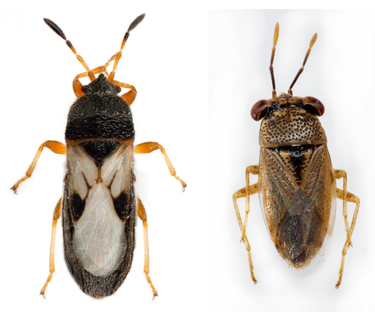
Treating chinch bug infestations
The secret to stopping these lawn-eating pests is to make their habitat uninhabitable. The best way to effectively root out these bugs is to treat them based on the severity of your infestation.
Minor infestation
Start by dethatching your lawn. Removing thatch until there is only 1/8 inch remaining is best. Since chinch bugs live in the thatch, removing it will force them to find a new home.
Moderate infestations
Unfortunately, there is no quick and eco-friendly way to eradicate moderate chinch bug infestations. We recommend bringing in new grass seed after you dethatch. Grasses that include endophytes can help to eradicate the pests. Endophytes are good fungi that work with your grass; not only can endophytes help repel chinch bugs, but also they can make your grass more resilient against damage. While endophytes work best as a preventative treatment, it can help to slowly correct damage.
Severe infestations
For severe chinch bug issues, additional insecticide or chemical products may be necessary. The best approach is to begin by dethatching your lawn, then spread Sunday grass seed. If the issue persists, please reach out to your local extension office for the safest way to explore stronger treatment options.
The best cure is prevention
As with lawns—and so with life—prevention is generally the best medicine. Growing Sunday blends of tall fescue, fine fescue, and perennial ryegrass is a great way to introduce endophyte into your lawn and help prevent chinch bug infestation. Good mowing habits, watering, and a regular fertilization schedule will also help you keep a consistent and healthy lawn ecosystem that naturally repels pests. And don’t forget to keep your lawn thatch between ⅛ – ½ inch to prevent buildup and excess chinch bug habitat. With regular lawn maintenance, pest control is a, well, cinch. OK that’s the last time we promise.
Cited sources
Figure 1. Chinch bug nymphal instars and adult D. S. Reiland
Figure 2. Chinch bug adult (left) vs big-eyed bug (right) D. S. Reiland Billeisen, T., & Brandenburg, R. Chinch Bugs in Turf. NC State Extension Publications.
Featured Image on Blog home page. Phil Nixon, September 20, 2016. Home, Yard & Garden Pest Newsletter, Issue 16. University of Illinois Extension.







